College Basketball
March Madness Bracket: Complete 68-team guide to the Men's 2024 NCAA Tournament | Pickswise
The most wonderful time of the year is here – March Madness! Now that we know the field, it is time to fill out your brackets and lock in your opening round or future bets. As usual, Pickswise has you covered with ample content throughout the NCAA Tournament, including the return of this bracket guide – which contains key trends, historical info and team traits that should help you complete your bracket. Let’s get started.
Don’t miss our March Madness picks for EVERY NCAA Tournament game!
March Madness bracket trends
The optimal bracket usually contains a mix of chalky selections and upset picks to make it unique compared to the rest of your contest pool. Picking the winner is obviously ideal, but also quite challenging – especially if you don’t follow the sport all year long. Therefore, your goal should be to get as many Elite 8 and Final 4 teams correct as possible. In some cases, depending on the size of your pool, you don’t have to pick the NCAA Tournament winner in order to win your contest. That being said, here are a few historical trends that should help you put the right foot forward when filling out your bracket.
1 – Last season, #4 UConn ended a 5-year run in which a 1-seed won the NCAA Tournament. It was just the 4th time in the last 16 iterations of this event that a #1 seed did not win the tournament. Interestingly enough, UConn won the title in 3 of the 4 years that a #1 seed did not win, and is now one itself.
2 – While #1 Purdue lost to #16 Fairleigh-Dickinson last year, that is not the norm for the top seeds in each region. #1 seeds are 150-2 SU against #16 seeds since the tournament expanded to 64 teams in 1985. In fact, last year was the first year since 2018 that multiple #1 seeds lost before the Sweet 16 – something that has happened just 4 times since expansion. It will be interesting to see how this trend performs this season, as only 11 of the 32 top seeds in each conference tournament ended up cutting down the nets over the last 2 weeks.
3 – #1 seeds win 2 games in the NCAA Tournament over 85% of the time in the last 39 years.
4 – #2 seeds have won almost 93% of their first round games since 1985. However, a #15 seed has defeated a #2 seed in 3 consecutive years – Princeton (2023), Saint Peter’s (2022) and Oral Roberts (2021). Furthermore, #2 seeds and #1 seeds have not met in the Elite 8 since 2019, while a #2 seed has not won the title since 2016.
5 – Outside of #1 seeds, #3 seeds have been the most consistent in the last 3 years. In fact, only 1 has lost outright to a #14 seed since 2021. That was the 1st time a #3 seed was upset in the Round of 64 since 2016, which happened to be the end of a 4-year run of #14 seeds beating #3 seeds between 2013 and 2016.
6 – #4 seeds have won almost 79% of their Games against #13 seeds since 1985, but #13s have been hot of late. #4 seeds have won just 60% of the time since 2018.
7 – #5 seeds are 99-53 since 1985, and have become a popular upset pick in recent years. However, after losing 3 out of 4 to #12 seeds in 2019, they are 9-3 SU in this Round of 64 matchup.
8 – #6 seeds were 3-1 SU against #11 seeds last year after going 1-3 in 2022 and 2-2 in 2021. They are 94-58 since 1985 in this matchup, and have swept the #11 seeds just 5 times in that span.
9 – #7 seeds have won just over 60% of their Round 1 games since 1985. They are 6-2 SU against #10 seeds in the last 2 years, but with a historically strong bubble and some odd seeding this year – #10 seeds could be a solid contrarian pick. Make sure to note First Four winners will be #10 seeds this year instead of #11 seeds like years past. This will come in handy later.
10 – Despite being the higher seed, #9s have a winning record over #8s since the tournament expanded to 64 teams. However, the winner of this matchup does not advance to the Sweet 16 very often.
11 – Be conscious of the spreads when filling out your bracket. If a higher seed is listed as a favorite over a lower seed (example #11 favored over #6), it is usually a strong indicator that an “upset” could occur in that matchup.
12 – #1 seeds have won the tournament 25 times in the last 38 events, while #2 seeds and #3 seeds have been crowned as champions 9 combined times in that span. #5 seeds are the only ones in the top 8 that have yet to win a title.
13 – #11 is the highest seed to make it to the Final Four. It has happened 5 times since 1985. The furthest a #12 seed has gone is the Elite 8, which happened twice in the last 39 years. The only seed higher than #12 to make it that far is #15 Saint Peter’s in 2022.
14 – A team from the First Four has made it to the Round of 32 all but once since the play-in round was implemented in 2011. Pitt and Fairleigh-Dickinson both did it last year.
15 – A west coast team has not won the national championship since Mike Bibby, Jason Terry and the Arizona Wildcats did it in 1997. They beat Kentucky that year.
16 – Since the NCAA Tournament expanded to 64 teams, no team has lost its 1st conference tournament game and went on to win the national title. This applies to Alabama, Creighton, Duke, Kansas, Kentucky, and Tennessee.
March Madness team traits to note
There are a few things to look for when picking teams to make deep runs in March Madness. Make sure a vast majority of your Elite 8 teams possess most, if not all of of these characteristics:
1 – Health – The college basketball season is a long one, and sometimes teams are battered and bruised when they make it to the NCAA Tournament. Be informed on as much injury news as possible, as depth is invaluable – especially in the rounds following short rest on Saturdays and Sundays (Round of 32 and Elite 8).
2 – Experienced guards – Veteran guard play is almost essential for a deep postseason run. Not very many title teams have their offense operated by a freshman guard who has yet to play in the postseason. Teams who make deep runs tend to have at least 1 junior or senior guard, usually with NCAA Tournament experience, that can be relied upon for his scoring and overall playmaking while minimizing turnovers.
3 – KenPom top 25 – Since KenPom’s analytics started in 2002, every national except 1 has finished the season ranked in the top 25 in both offensive and defensive efficiency. Note, teams currently outside this threshold can play their way into the top 25 with a deep run in March.
4 – Offensive rebounding advantages – Creating second chance opportunities while simultaneously limiting opposing ones could be the difference maker in some close games.
5 – Reliable free throw shooting – Everyone loves the late-game drama in the NCAA Tournament, when the importance of free throws is magnified. Think long and hard before advancing any team past the Round of 32 that shoots under 70% from the free throw line.
6 – Consistency from the 3-point line – The 3-point line is the great equalizer in college basketball and an integral part of the game today. Teams who excel from the perimeter can be the most difficult to defend given their ability to spread defenses thin. Here’s a tip: slower-paced teams that can control the tempo of a game while posing a consistent threat from the perimeter are extremely dangerous in March.
7 – A legitimate post presence – Many of the top teams have legitimate big men that can either protect the rim at an elite level, score at an elite level, or do both. Having someone that can control the paint could prove to be a valuable asset this March.
March Madness team guide
EAST
#1 – Connecticut Huskies (31-1) – The defending national champions and winners of the 2024 Big East Tournament aim to be the first team to win consecutive titles since Florida in 2006-2007. The Huskies have 4 players that average at least 12.5 points per game, including arguably the best player in the Big East in Tristen Newton and Donovan Clingan – who is top 30 nationally in offensive rating, offensive rebounding rate and block rate.
#2 – Iowa State Cyclones (27-7) – The Big 12 Tournament champions enter the NCAA Tournament on an 8-2 SU run. Iowa State currently boasts the best defense in the country over the last month per BartTorvik and over the course of the season per KenPom. However, the Cyclones are outside the top 50 in KenPom’s offensive efficiency, and they are outside the top 200 in eFG% in the month of March.
#3 – Illinois Fighting Illini (26-8) – Led by Terrence Shannon and Marcus Domask’s 38.3 combined points per game, the Big Ten Tournament champions have 1 of the most prolific offenses in the country. However, their defense is likely going to be an issue, as the Illini are outside the top 90 in efficiency and have yielded at least 80 points frequently in the last 2 months. They have won 8 of their last 10, but are 0-4 SU against teams currently ranked in KenPom’s top 15.
#4 – Auburn Tigers (27-7) – Another conference tournament champion, the Auburn Tigers are incredibly balanced with top 10 marks in adjusted offensive and defensive efficiency. They lead the nation in opposing eFG%, and their interior size with Johni Broome and Dylan Cardwell makes them extremely difficult to score on around the rim. Limited success away from home against some of the top teams on its schedule is mildly concerning, but the Tigers are on a roll as of late – ranking 2nd overall since March 1 according to BartTorvik.
#5 – San Diego State Aztecs (24-10) – Last season’s national runners-up interestingly find themselves in the same region as their 2023 Final Four and championship counterparts. Jason LeDee, Lamont Butler, Darrion Trammell and Micah Parrish all remain from last season’s run, but the road to the Final Four seems to be much more challenging this year. Defense is San Diego State’s calling card, as the Aztecs are top 10 nationally in KenPom’s efficiency metric – but they have regressed in the month of March. They have not been in the best form offensively either, ranking outside the top 300 in eFG% since March 1st.
#6 – BYU Cougars (23-10) – The Cougars’ first season in the Big 12 was solid, as they picked up wins over Iowa State, Texas, Baylor, Kansas and TCU. They figure to be a tough out for defenses that struggle to guard the perimeter given their ability to light it up with their fast pace of play and prolific shooting capabilities. However, defense is not their strong suit, ranking 11th in the Big 12 in efficiency and outside the top 80 in the month of March. For what it’s worth, the Cougars were 7-8 SU against teams in the top 100 of KenPom’s offensive efficiency ranking.
#7 – Washington State Cougars (24-9) – Following a 7-win improvement from last season to this, the Cougars return to the NCAA Tournament for the first time since 2008. The Cougars are a sound defensive unit with plenty of interior size, but inexperienced guards and inconsistencies at the free throw line are not favorable for a postseason run.
#8 – Florida Atlantic Owls (25-8) – As the Cinderella story in a year full of them, the Owls return to the NCAA Tournament following an improbable run to the Final Four in 2023. They have almost the exact same roster as last season, but there have been times where the Owls look completely disinterested defensively. FAU is currently outside the top 100 in KenPom’s adjusted defensive efficiency, and it has yielded at least 70 points in 8 consecutive games.
#9 – Northwestern Wildcats (21-11) – The Wildcats are limping into the postseason having lost 3 of their last 4. Starting guard Ty Berry is out for the season with a meniscus injury, and center Matthew Nicholson sustained a foot injury recently that will likely result in him missing the tournament. Injuries aside, the Wildcats have a top 30 offense from an efficiency standpoint and are top 10 in turnover rate and 3-point percentage. Defense is a concern though, as Northwestern is 249th in opposing eFG%.
#10 – Drake Bulldogs (28-6) – The Missouri Valley champions are led by Tucker DeVries, who averages almost 22 points, 7 rebounds and 4 assists per game. With a top 40 offense that has the ability to connect consistently from deep, the Bulldogs could be a popular upset pick. They have beaten 3 tournament teams already in Oakland, Akron and Nevada, and ended the season on a 10-1 SU run following their road loss to Indiana State.
#11 – Duquesne Dukes (24-11) – Duquesne is a bid-stealer, making an improbable run through the Atlantic 10 tournament with wins over Dayton, St. Bonaventure and VCU. The Dukes are led by their senior guards Jimmy Clark and Dae Dae Grant, but scoring can be a challenge outside of those 2. Defense is the strength of Duqusene’s genetic makeup, as the Dukes are 28th nationally in KenPom’s adjusted defensive efficiency and force turnovers at a top 50 rate.
#12 – UAB Blazers (23-11) – The Blazers were another improbable conference tournament champion, parading through the AAC with wins over Wichita State, South Florida and Temple. There was quite a bit of roster turnover after last season’s deep NIT run, but Eric Gaines, Javian Davis, Efrem Johnson and Tony Toney all returned this year. While UAB is solid offensively, it leaves a bit to be desired defensively – ranking 220th in adjusted efficiency and 216th in opposing eFG% in the last month.
#13 – Yale Bulldogs (22-9) – After a year hiatus, the Bulldogs won the Ivy League and will return to the Big Dance. They were 11-3 in conference, but 1-3 SU against tournament teams – including 15 point losses at Gonzaga and Kansas. Yale has plenty of experience and longevity on its roster, along with a 7-foot rim-protector in sophomore Danny Wolf – who held Kansas’ Hunter Dickinson to just 8 points on 9 field goal attempts in December. It was 1 of just 2 games Dickinson failed to score 10 or more points this season.
#14 – Morehead State Eagles (26-8) – The Eagles captured the OVC title for the 1st time since 2021 and the 2nd time since 2011. However, they have yet to beat a tournament team and were largely uncompetitive against power conference opponents with the exception of a 1-point defeat at Indiana. Losses at Alabama, Auburn and Purdue were all by at least 23 points. Keep an eye on Riley Minix, Morehead’s leading scorer who averages more than 20 points and almost 9 rebounds per game.
#15 – South Dakota State Jackrabbits (22-12) – This is not the same type of team it was when the Jackrabbits made the NCAA Tournament in 2022. South Dakota State won the Summit League, but has yet to beat a team in the top 120. The Jackrabbits also sustained multiple losses to teams ranked outside the top 210.
#16 – Stetson Hatters (22-12) – The A-Sun champions will face the defending national champions in what will be their first NCAA Tournament appearance at the Division 1 level. While they beat UCF early in the season, they lost to Chicago State twice and dropped multiple Games against teams outside the top 250.
Take a look at the bracket and NCAA Tournament schedule
SOUTH
#1 – Houston Cougars (30-4) – The Cougars touted the best defense in the country for much of the season, but their depth has been challenged with a recent injury to Joseph Tugler – who joins Terrance Arceanux and Ramon Walker on the sidelines. Forward J’Wan Roberts has also been banged up recently, but should be good to go for the NCAA Tournament. Despite all the injuries, the Cougars are top 12 nationally in offensive and defensive efficiency in the last month, and they still have an elite trio of guards in Jamal Shead, Emmanuel Sharp and LJ Cryer – each of whom averages more than 12 points and 1 steal per game.
#2 – Marquette Golden Eagles (25-9) – Like top-seeded Houston, Marquette is a bit banged up heading into the NCAA Tournament. The Golden Eagles were without Tyler Kolek in the Big East Tournament, yet made it to the title game where UConn asserted its dominance. Oso Ighodaro seemed to sustain an injury in the Big East championship, and Stevie Mitchell appeared to be playing through an injury, too. However, coach Shaka Smart expects them to play this weekend. Marquette is top 25 in offensive and defensive efficiency per KenPom, but free throw shooting and rebounding are areas of concern.
#3 – Kentucky Wildcats (23-9) – The Wildcats can score on anyone in the country, but they do not defend well – which has cost them multiple wins this season. In fact, they scored more than 80 points in 6 of their 9 losses. Antonio Reeves, Rob Dillingham, and Reed Sheppard average more than 48 combined points per game, pacing an offense that is top 5 nationally in efficiency and eFG%. Kentucky has scored at least 85 points in 6 straight, but yielded at least 80 in 5 of them.
#4 – Duke Blue Devils (24-8) – After an early exit in the ACC Tournament, the Blue Devils enter the NCAA Tournament on a 2-game losing streak and are 3-3 SU in their last 6. Senior guard Jeremy Roach operates the 7th-most efficient offense in the country, while Kyle Filipowski does the dirty work in the paint and on the boards – in addition to being able to stretch the floor and knock down perimeter shots. Duke’s defense seems to have regressed lately, as it is 41st in efficiency and 123rd in eFG% over the last month. Keep an eye on Caleb Foster’s injury status. He missed the ACC Tournament, and his shooting ability would be invaluable for the Blue Devils.
#5 – Wisconsin Badgers (22-13) – The Badgers fell just short of winning the Big Ten Tournament, but seemed to regain some of their form after losing 8 of 11 to end the regular season. This Wisconsin team is actually better offensively than it is defensively, especially as of late – which is not the norm for the Badgers. Per BartTorvik, they are 10th nationally in offensive efficiency over the last month, but 77th on the defensive side – including 289th in opposing eFG%.
#6 – Texas Tech Red Raiders (23-10) – The Red Raiders are top 50 on both sides of the ball, but center Warren Washington’s status is crucial if they want to make a deep postseason run. With him on the floor, Texas Tech scores about 8 more points per 100 possessions (adjusted for opponent) and is much better defensively around the rim. The Red Raiders had a few sizable wins at home against the likes of Kansas, TCU and Baylor, but they have just 2 wins away from home against tournament teams – at Texas in January and against BYU in the conference tournament.
#7 – Florida Gators (24-11) – The Gators made an incredible run through the SEC Tournament, but were humbled by Auburn in the title game. To make matters worse, they lost starting center Micah Handlogten to a gruesome leg injury at the beginning of the first half. The Gators like to play fast, and they can score with anyone in the country. However, their offense can be streaky, and their defense is typically not efficient enough to make up for their offensive lulls when they occur.
#8 – Nebraska Cornhuskers (23-10) – Nebraska improved from 16-16 to 23-10 this season, including a 12-8 conference record – which was its best since 2018. The Cornhuskers are physical defensively, with top 30 marks in efficiency and eFG%. They are also fairly balanced offensively with 6 different players that make at least 34% of their perimeter shots.
#9 – Texas A&M Aggies (20-14) – The Aggies seemed to be destined for the NIT when they lost 5 straight Games in the middle of February. However, they hit another gear late in the season and won 5 of their last 6, including a 10-point win over Kentucky in which the Aggies scored 97 points. Texas A&M doesn’t appear to be built for a deep postseason run due to inconsistencies and inefficiencies both offensively and defensively, but the leadership and reliability of future pro Wade Taylor will keep the Aggies in almost every Game they play.
#10 – Boise State Broncos (22-10) / Colorado Buffaloes (24-10) – You could argue both of these teams were underseeded. The selection committee did not seem to like the Mountain West this year, while Colorado had lingering injury concerns for much of the season and arguably has yet to reach its peak.
#11 – NC State Wolfpack (22-14) – The Wolfpack ended the regular season with 4 straight losses and 10 in their last 14. However, they looked like a completely different team in the ACC Tournament, where they won 5 games in 5 days and ultimately cut down the nets as conference tournament champions. This team is loaded with experience, and is led by the DJs – Burns and Horne.
#12 – James Madison Dukes (31-3) – The Dukes tied UConn for the most wins this season. They are currently on the nation’s longest winning streak (13 Games), and most notably started the season with a thrilling overtime victory at Michigan State. The Dukes like to play fast, and they score efficiently doing so. They also defend the perimeter well, and have a monster on the boards in Boston College transfer TJ Bickerstaff.
#13 – Vermont Catamounts (28-6) – The Catamounts will represent the America East for the 3rd straight season and 5th time since 2017. They like to slow the pace of their games, while shooting 3’s at a top 40 rate and possessing the 11th-best turnover rate in the country.
#14 – Oakland Golden Grizzlies (23-11) – The Horizon League champs won outright at Xavier despite catching double digits and easily covered the spread against Ohio State and Illinois at the beginning of the year. Their performances against Michigan State and Dayton weren’t as good, but the Grizzlies have big Game experience and play a unique zone defense that could frustrate teams who aren’t making jump shots.
#15 – Western Kentucky Hilltoppers (22-11) – The Hilltoppers have the highest adjusted tempo in the country, but rank 266th in turnover rate and 191st in adjusted offensive efficiency per KenPom. Marquette will be their first power conference opponent this season.
#16 – Longwood Lancers (21-13) – An unlikely Big South champion, the Lancers have not beaten a team who ranks in KenPom’s top 100. This will be their 2nd NCAA Tournament appearance in 3 years.
MIDWEST
#1 – Purdue Boilermakers (29-4) – After being the 2nd #1 seed ever to lose in the first round, Purdue hopes history will repeat itself. After Virginia lost as a #1 seed in 2018, they came back the next year and won the whole thing. Zach Edey is the nation’s most impactful player, and his supporting cast appears to be much better this season with the addition of Lance Jones and the improvement of Braden Smith. The Boilermakers are 4th nationally in adjusted offensive efficiency and top 25 defensively.
#2 – Tennessee Volunteers (24-8) – The SEC regular season champion Tennessee Volunteers looked like the popular national title pick before they lost at home to Kentucky to end the regular season, followed by a miserable offensive performance against Mississippi State in the SEC Tournament. Dalton Knecht has arguably been the best pure scorer in all of college basketball this season, but the Volunteers may only go as far as he can take them. They don’t have much consistency offensively outside him and Zakai Zeigler, yet they are an elite defensive group.
#3 – Creighton Bluejays (23-9) – The Bluejays failed to win a game in the Big East Tournament, but this is a supremely experienced and talented bunch. The issue is, they live and die by the 3-point line – which could be of concern if a cold-shooting day arises in a tournament setting. Creighton is currently top 25 in offensive and defensive efficiency per KenPom.
#4 – Kansas Jayhawks (22-10) – The Jayhawks seem to always be in the mix, but depth is a real concern this year. They rank 318th in bench minutes, and are dealing with injuries to their 2 best players in Kevin McCullar and Hunter Dickinson.
#5 – Gonzaga Bulldogs (25-7) – The ‘Zags were written off by many, but here they are with a top 5 seed in the NCAA Tournament. While it is not quite as prolific offensively as in years past, Gonzaga is 9th nationally in adjusted efficiency and 8th in eFG%. The ‘Zags earned an outright victory over Kentucky at Rupp Arena in early February, but their resume against tournament teams outside of that win and their road win at Saint Mary’s is mildly concerning.
#6 – South Carolina Gamecocks (26-7) – The Gamecocks experienced one of the biggest turnarounds in the sport, going from 11-21 overall and 4-14 in conference to 26-7 and 13-5, respectively, this year. This team added plenty of experience via the transfer portal, but freshman forward Collin Murray-Boyles has been the most dynamic in recent weeks. He plays alongside a floor-stretching big man in BJ Mack, while South Carolina’s guards seem to always pose a threat from the perimeter. Myles Stute’s health is key if the Gamecocks want to replicate their 2017 Final Four run, as he provides a combination of size and shooting ability they cannot replace.
#7 – Texas Longhorns (20-12) – Texas has a top 15 offense over the last 4 weeks. The Longhorns don’t shoot many 3’s, but they have a few shooters that can get hot in Max Abmas, Dylan Disu and Tyrese Hunter – all of whom have NCAA Tournament experience. For what it’s worth, Texas did not beat a tournament team outside the Big 12.
#8 – Utah State Aggies (27-6) – One of the faster-paced teams in the Mountain West, the Aggies like to get up and down the floor quickly and attack the rim at a high rate. However, they did not play a single power conference opponent, which could hinder them against the size and physicality of TCU in the first round.
#9 – TCU Horned Frogs (21-12) – Like Utah State, TCU likes to play fast and attack the rim frequently. The Horned Frogs are highly experienced with a rotation full of juniors and seniors, some of whom were on the team that fell 3 points short of the Sweet 16 last year. They don’t shoot many perimeter shots as a team, but Trevian Tennyson and Emanuel Miller can be relied upon from deep while Jameer Nelson Jr. can heat up at any moment. With a good showing in the first couple rounds, TCU could play its way into the top 25 defensively.
#10 – Virginia Cavaliers (23-10) / Colorado State Rams (24-10) – I am not sure what the committee saw in Virginia, but the Cavaliers will head to the First Four in Dayton to play Isaiah Stevens and the Colorado State Rams – who are in their 2nd NCAA Tournament in 3 years.
#11 – Oregon Ducks (23-11) – The Ducks were another team to make an improbable conference tournament run, as they defeated UCLA, Arizona and Colorado en route to winning the final Pac-12 Tournament before the conference breaks up. They battled injuries for much of the year, but seem to be close to full strength now – especially in the front court. Oregon’s first round matchup with South Carolina should be a fun one, as the Ducks’ second-leading scorer Jermaine Couisnard used to play for the Gamecocks.
#12 – McNeese State Cowboys (30-3) – The Cowboys were 1 of 4 teams that won at least 30 games this season. Former LSU coach Will Wade has done an incredible job with this team, which comprises primarily transfers – some of whom have power conference experience. As such, this team is much stronger than your average Southland Conference representative, and could be a tough out for Gonzaga.
#13 – Samford Bulldogs (29-5) – After cutting down the Southern Conference Tournament nets, Samford returns to the NCAA Tournament for the first time since 2000. Bucky McMillan’s Bulldogs play at a top 15 pace and carry a 56.9% eFG% in addition to a 39.3% 3-point%. They also have one of the deepest rosters in the country, with plenty of shooters surrounding the standout big man in the post Achor Achor.
#14 – Akron Zips (24-10) – The MAC champions just barely made it through their conference tournament with a 3-point win over Ohio in the semifinals and a lucky 1-point win over Kent State in the final, but there is no denying this team’s talent. Enrique Freeman, Ali Ali and Sammy Hunter make up a dangerous frontcourt trio that can dominate the glass and stretch the floor, while 5th-year senior point guard Greg Tribble directs the offense.
#15 – Saint Peter’s Peacocks (19-13) – Deja vu for the Peacocks, who are a #15 seed matched up against an SEC team for the 2nd time in 3 years. When this happened in 2022, they not only defeated the Kentucky Wildcats in the first round, but made it to the Elite 8. However, there is a different coach leading the charge this year.
#16 – Montana State Bobcats (17-17) / Grambling State Tigers (20-14) – The Big Sky champion and the SWAC champion will square off in Dayton to determine who advances to play Purdue in the Round of 64. This will be Montana State’s 3rd consecutive NCAA Tournament and Grambling’s 1st as a Division 1 program.
WEST
#1 – North Carolina Tar Heels (27-7) – The Tar Heels boast the ACC’s best defense and are elite on the glass thanks to Armando Bacot and Harrison Ingram. They are equally as elite offensively with RJ Davis at the helm and Bacot controlling the paint, but have had a few head-scratching performances this season. Interestingly, BartTorvik gives #2 seed Arizona a better chance to make the Final Four than North Carolina.
#2 – Arizona Wildcats (25-8) – The Wildcats showed mortality this season, especially on the road. However, they are top 15 nationally in offensive and defensive efficiency according to KenPom, and they have non-conference wins over Duke, Michigan State, Wisconsin and Alabama. North Carolina transfer Caleb Love leads the way with 18.1 points per game, while Oumar Ballo mans the paint with 13.1 points, 10.1 rebounds and 1.2 blocks per game. The ‘Cats also have 3 shooters that make more than 38% of their perimeter shots and 3 guards that average more than 3 assists per game.
#3 – Baylor Bears (23-10) – The Bears have multiple veteran pieces with tremendous offensive firepower. However, depth is a concern – especially given the uncertainty of Langston Love’s injury status. The 6’5” guard averages 11 points per game and connects on 48% of his 3-point attempts, making him an integral piece of the office alongside the other talented Baylor guards like RayJ Dennis, Jayden Nunn and Ja’Kobe Walter. Defensive woes could stymie a deep postseason run, as Baylor ranks 227th in opposing eFG% and has no rim protection outside of Yves Missi.
#4 – Alabama Crimson Tide (21-11) – Alabama is another veteran team that is elite offensively while leaving a bit to be desired on the defensive end. On the season as a whole, the Tide rank 2nd nationally in KenPom’s offensive efficiency, and outside the top 110 on the other end of the court. However, Alabama’s offensive production has regressed a bit recently, ranking 69th in BartTorvik’s efficiency since March 1st. The Crimson Tide have lost 4 of their last 6, including their only SEC tournament game – which is not a good omen for their title hopes.
#5 – Saint Mary’s Gaels (26-7) – Saint Mary’s is the antithesis of Alabama. The WCC Tournament champs play at 1 of the 5 slowest paces in the country, and are propelled by their defensive fortitude. For reference, they are 3rd nationally in opposing eFG% this season and excel defensively around the rim. The Gaels are also one of the best rebounding teams in the country, but their frontcourt depth took a massive hit when Joshua Jefferson went down with a season-ending injury last month.
#6 – Clemson Tigers (21-11) – Clemson’s success in the non-conference saved them, as the Tigers beat fellow tournament teams UAB, Boise State, Alabama, South Carolina and TCU before the holidays. They did not have much success in the early portion of their conference schedule, but seemed to have figured things out before ending the season with 3 losses in 4 outings – including a 76-55 beating against Boston College in the ACC Tournament. All things considered, PJ Hall is a problematic matchup for many teams, and Joseph Girard has been a flamethrower from deep as of late.
#7 – Dayton Flyers (24-7) – Dayton’s body of work when considering its seeding is quite interesting. The Flyers beat a few non-conference teams that did not make the tournament such as LSU, St. John’s (how they did not make the tournament is beyond me), SMU and Cincinnati early in the season, but they haven’t been as crisp recently. Per BartTorvik, the Flyers are 47th in offensive efficiency and 190th in defensive efficiency since March 1st with a bottom 60 turnover rate. Shooters like Kobe Elvis, Nate Santos and Koby Brea will have to step up and hit big shots, as DaRon Holmes can only take them so far.
#8 – Mississippi State Bulldogs (21-13) – The Bulldogs made some noise on a national scale when they embarrassed the Volunteers in the SEC Tournament quarterfinals. They hung around with Auburn in the semis, but could not hit enough jumpers to win the game outright. In addition to turnovers, the aforementioned jump-shooting woes are the Achilles heel of this team. However, the ‘Dogs play with tremendous physicality and tenacity – especially on the defensive end and when battling for rebounds. If Josh Hubbard, DJ Jeffries, Dashawn Davis, or Shakeel Moore get hot at any point, Mississippi State will be a tough out. Don’t forget about Tolu Smith in the paint.
#9 – Michigan State Spartans (19-14) – Michigan State is one of those teams whose advanced metrics look better than its resume. The Spartans have lost 14 games, including 5 of their last 7. However, strength of schedule and wins over Baylor and Illinois seemed to have saved their season. This group has plenty of experience together and is formidable defensively, but Michigan State’s offense ranks outside the top 175 in efficiency over the last month according to BartTorvik.
#10 – Nevada Wolf Pack (26-7) – The Mountain West’s most experienced team makes its 2nd consecutive trip to the NCAA Tournament, but this time appears in the Round of 64 instead of playing in the First Four – where they lost to Arizona State last year. Senior guards Kenan Blackshear and Jarod Lucas represent one of the best guard tandems in the country, while the emergence of Nick Davidson has provided a reliable presence in the post and on the glass.
#11 – New Mexico Lobos (26-9) – Oddly enough, the Mountain West Tournament champion is seeded behind Nevada, which makes some sense given the Lobos were 0-2 SU against the Wolf Pack this season. Richard Pitino’s squad lost 6 of its last 10 prior to winning 4 games in 4 days in Las Vegas last week, but is top 25 in defensive efficiency in the last month while holding opponents to 29.8% from the perimeter. Keep an eye on Jaelen House, who scored at least 16 points in every MWC Tournament game.
#12 – Grand Canyon Antelopes (29-4) – This will be the 3rd NCAA Tournament appearance in 4 years for the ‘Lopes, all under Bryce Drew. The previous 2 appearances were 12-point losses to Iowa and Gonzaga, so they hope to experience a different result this time around. A first round date with Saint Mary’s will not be easy, but Grand Canyon is solid in its half court offense and has the size to match the Gaels. The Antelopes have been sound defensively all year, and beat a very strong San Diego State team in early December.
#13 – Charleston Cougars (27-7) – For the 2nd straight year under Pat Kelsey, the Cougars led the CAA in efficiency while finishing top 2 in the conference in most other major offensive statistics. Charleston likes to play with pace and shoots plenty of 3’s, so any game involving the Cougars is likely to be one of high variance.
#14 – Colgate Raiders (25-9) – The Patriot League champs led the conference in efficiency, but are outside the top 200 nationally when evaluating their full body of work. Unlike previous years, this version of Colgate is better defensively than it is offensively. However, the Raiders have just 1 win over a tournament team – which makes up 33% of their total wins against top 200 teams.
#15 – Long Beach State Beach (21-14) – Beach ended the regular season on a 5-game skid before winning 3 games in 3 days en route to a Big West Tournament title. They play at a top 30 pace offensively, but are not very efficient.
#16 – Howard Bison (18-16) / Wagner Seahawks (16-15) – This will be Howard’s 2nd consecutive NCAA Tournament appearance after playing against Kansas in the Round of 64 last year. Wagner is making its 1st NCAA Tournament appearance since 2003.
-

 College Basketball4h ago
College Basketball4h agoIndiana vs UNC Greensboro Prediction 11-21-24 College Basketball Picks
-
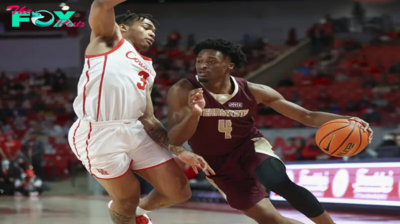
 College Basketball4h ago
College Basketball4h agoTexas State vs Bradley Prediction 11-21-24 College Basketball Picks
-
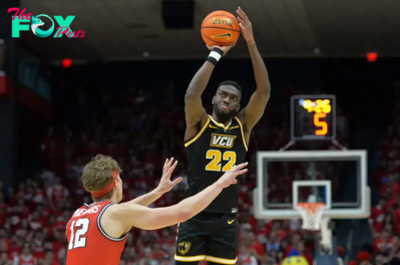
 College Basketball9h ago
College Basketball9h agoVCU vs Seton Hall Prediction 11-21-24 College Basketball Picks
-

 College Basketball9h ago
College Basketball9h agoFlorida Atlantic vs Oklahoma State Prediction 11-21-24 College Basketball Picks
-
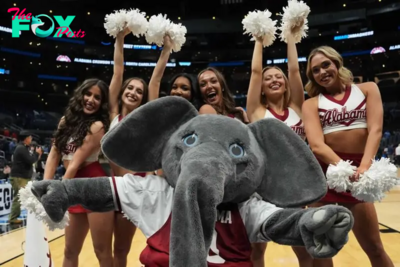
 College Basketball15h ago
College Basketball15h agoAlabama vs Illinois Prediction 11-20-24 College Basketball Picks
-
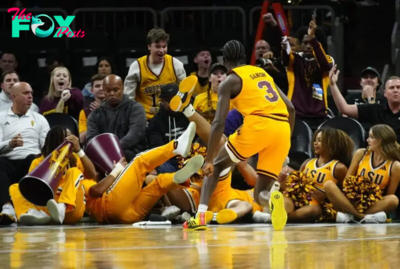
 College Basketball15h ago
College Basketball15h agoArizona State vs Cal Poly Prediction 11-20-24 College Basketball Picks
-
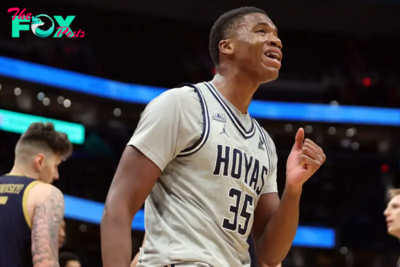
 College Basketball20h ago
College Basketball20h agoGeorgetown vs Mount St. Mary’s Prediction 11-20-24 College Basketball Picks
-
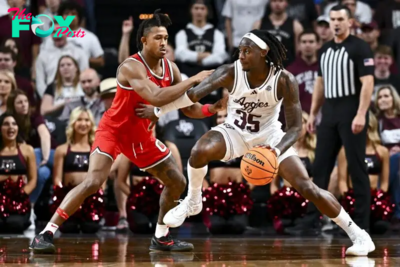
 College Basketball20h ago
College Basketball20h agoTexas A&M vs Southern Prediction 11-20-24 College Basketball Picks























